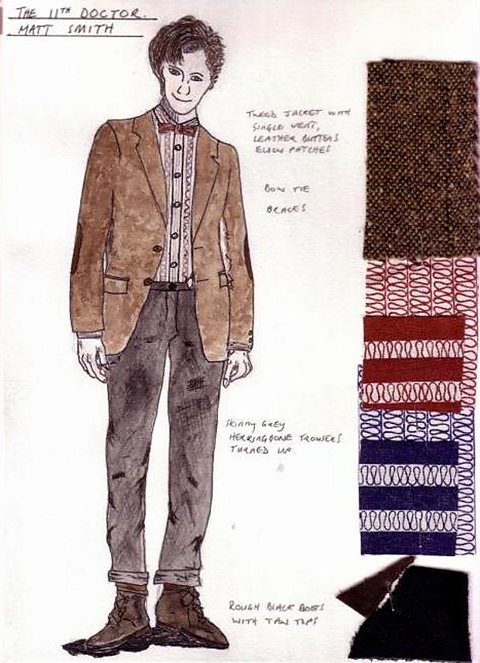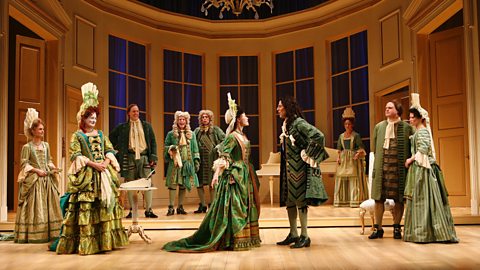Selecting a costume
Usually costume designers will present sketches to the director to show their ideas on how the character should be dressed. The director can then visualise the characterâs appearance and suggest any amendments. Look at this sketch by costume designer, Ray Holman for Matt Smithâs portrayal of Doctor Who. Note the inclusion of the bow tie, a unique costume element for this particular incarnation of the character. Does the costume and fabric choice reflect the characterâs persona accurately? And if so, why?

Costume and movement
A major issue is whether the actor is moving appropriately. Just imagine the impact a whalebone corset would have on your ability to relax in a chair, or how you might get through a narrow doorway if you were wearing a very wide 18th-century skirt. Watching a play in period dress, you will be interested in not only how well the performer deals with the costume but also whether the restrictions that they are working with actually have some bearing on the action of the play. A good example would be the cane that would have been carried by all the men in the Restoration comedies of the 17th century.

Playwrights such as William Congreve give the male characters very funny lines which require an elegant pose on the stage to maximise their effect. In his comedy of manners, The Way of the World, which was written in 1700, one such character erupts in violence at one point. A sword coming out of the characterâs cane or rather swordstick, would emphasise that violence and how the behaviour of polite society masks it.